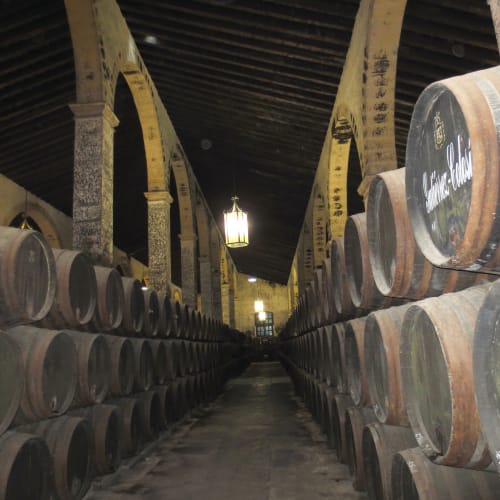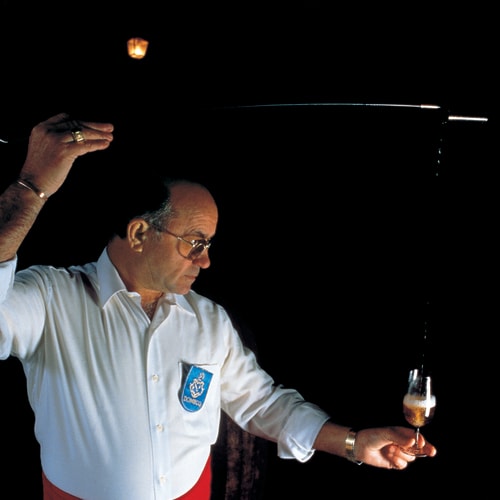Three Kings Sale - Up to 40% Off! Shop Sale
Adventure, War and Sherry
Don Harris | August 2015




Cádiz is a magical city founded in the mists of time. About 1100 BC, the Phoenicians (the Canaanites of the Bible) established it as a trading center – far from the shores of the eastern Mediterranean. Both geographically and culturally, it is as distant from Barcelona as Manhattan is to the Mississippi Delta.
The principal gate to the ancien barrio, the old city, is through the Arco de los Blanco, built around 1300 AD. Beyond the remnants of medieval battlements, the lively walled city remains intact. One of my great pleasures is merely to wander through her winding cobblestone streets adorned with beautiful little plazas such as the elegant Plaza de Mina located in the heart of the city.

Curiously to some, I also find it a treat to drop by the vast public market close to the Cathedral. I love to visit the abundant fruit stalls selling blood oranges, clementinas and other local fruits. Many of them are carefully stacked in the form of pyramids! Around the edge are stalls full of jamón and all kinds of sausages. Next to them are the local breads and cheeses.
Cádiz is located on a very narrow peninsula jutting out into the Atlantic Ocean, not far from the Straits of Gibraltar. It is the gateway to the Mediterranean Sea, and was subjected to continual naval raids over the years: pirates, privateers and especially the Royal Navy, Spain’s constant political rival.
In 1587, Sir Francis Drake, during one of the periodic Cádiz naval sieges, captured the Cádiz harbor and set fire to many Spanish ships in the armada preparing an invasion of England. A British landing party came upon the grape arbors near Jerez de la Frontera.
They were enthusiastic about the new type of wine and spirited away 2900 butts of sherry that was waiting on the docks of Cádiz. This new "sherry wine" was greeted with great enthusiasm. Shakespeare’s Falstaff did much to spread the reputation of the sherry, then known as sack: "If I had a thousand sons, the first humane principle I would teach them should be to forswear thin potions and to addict themselves to sack."
In fact, their newly discovered sherry was among the world’s oldest wines. The grape vines originated in ancient Phoenicia. The production of wine continued under the 300 year rule of the Carthaginians whose leader Hannibal used the city as a staging point for his invasion of Spain and Rome. The wine of Jerez and its environs spread throughout the Roman world. In 206 BC, there is reference to it as the wine from Ceret (Jerez). Those foraging troops had rediscovered an ancient wine tradition.
Merchants from England, Scotland and Ireland were quick to understand its commercial value. Many of these wine merchants moved from Great Britain to Andalucía and built thriving wine businesses. Even today bodegas located in the three sister cities of Jerez de la Frontera, Sanlúcar de Barrameda and El Puerto de Santa María bear British names, such as Osborne and Terry. I have a young friend from one of the major sherry families named Gonzálo Osborne Mac-Crohan, yet he could not be more Spanish! Another friend of mine is María Arizón whose surname is a transliteration of "Harrison." Her ancestors were an Irish family who fled persecution by immigrating to Catholic Spain.
An amusing footnote: 200 years after Sir Francis Drake’s raid of Cádiz, sherry bodegas did a thriving business during the decisive Battle of Trafalgar. Showing no favoritism, they provisioned hundreds of barrels of sherry to the warships of the Royal Navy under Lord Nelson, and at the same time provided an even greater number of casks of sherry to the 33 warships of the combined French and Spanish fleets of Napoleon. To mark the occasion, Bodegas Hidalgo, founded in 1792, offers Wellington Palo Cortado and Napoleon Amontillado Sherries!
Our first experience with the world of sherry was when, as a young Navy couple with a growing family, we decided to live in downtown El Puerto de Santa Maria, one of the three sherry cities - the others being Jerez de a Frontera and Sanlúcar de Barrameda. Our traditional house (complete with wrought iron barred windows facing the street and an internal patio with citrus trees) was located in the midst of a cluster of Osborne bodegas, which filled the neighborhood with the intoxicating aroma of sherry.

As many of you may recall, sherry is a distinct kind of white wine that is produced by a Solera process – which means that year after year, the new wine is introduced into a barrel of older wine, while part of that older wine is added to barrels of still older wine and so on. The goal is to produce a sherry wine that is consistent in flavor year after year. It is for this reason that sherry wine does not have a vintage date since within every cask are blended many vintages.
One unexpected discovery for us was the magnificent sherry vinegar of the region, a dry and complex vinegar unlike any other. It has transformed our everyday salads. No more dreary commercial bottles of dressings for us! We just take a small bottle (maybe an empty spice jar); add one part sherry vinegar and two parts of quality fragrant extra virgin olive oil. We might toss in herbs such as basil or garlic, and then with a couple of shakes, we have an effortless gourmet vinaigrette salad dressing. It is easy to do, try it!
We searched for the source of a sherry vinegar we particularly enjoyed and found it was made in a small family bodega in El Puerto located just three or four blocks from where we lived forty years earlier – right under our nose, as it were. On our way to catch the ferry to Cadiz, we must have walked by the Gutiérrez Colosía sherry bodega many times!
We introduced ourselves to the owners, Carmen and Juan Carlos, and found them extraordinarily cordial. As they proudly showed us around their bodega, they treated us as part of their family. They led us way back in the cavernous bodega to a room full of their finest Sherries. Over in the corner was a section with dusty barrels of their oldest vinegars. Aged in oak for decades, the reserve sherry vinegar was dry and complex, with notes of smokiness and roasted almonds. Another barrel contained a sweet and sour variation of sherry vinegar that moderates its robust flavor by adding a few drops of sweet Pedro Ximenez sherry wine. Their Gutiérrez Colosía sherry vinegars are among the finest vinegars we have ever tried.
The legacy of the Phoenician introduction of wine to Cádiz thousands of years ago has resonated throughout history, influencing cultures from the ancient Romans to the English and French empires of the renaissance. I am pleased that this tradition continues, and that the legacy of hundreds of generations can be experienced in the complex flavors of sherry wine and vinegar of the region.
Tu amigo,
Don

